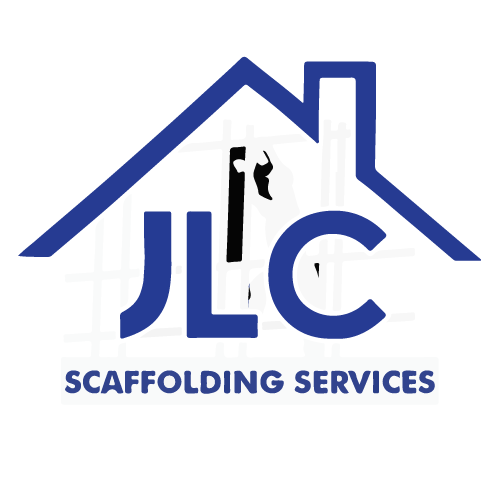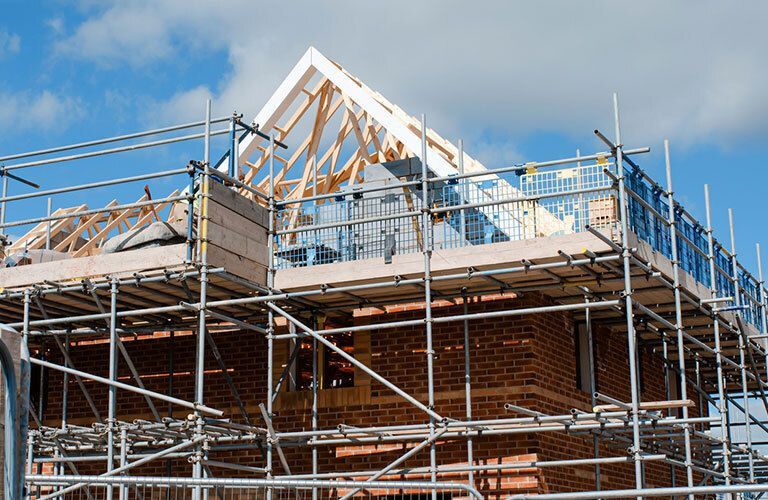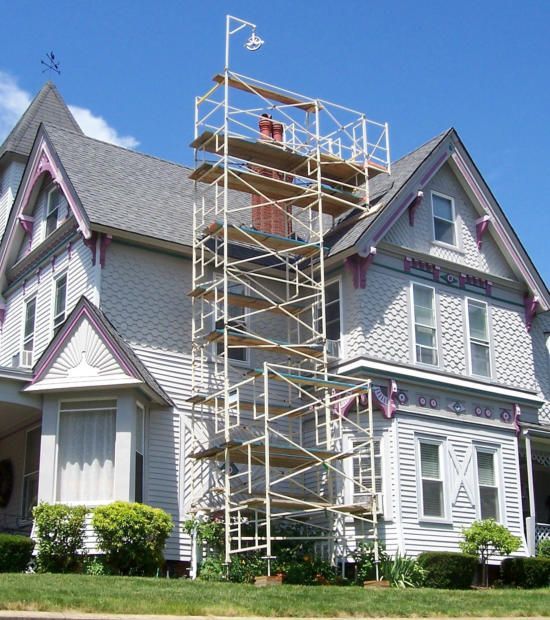FAQs
FAQs
Got a question about scaffolding? We've got the answers.
-
What factors affect scaffolding costs?
Scaffolding costs can vary depending on the size and complexity of the
project, as well as location, access to the site, and rental duration. Speak
to one of our experienced team members to obtain an accurate quote.
-
How Much Scaffolding is Required?
This will depend on various factors such as the size and height of the building, the type of work being carried out, and access to the site. Our team can assess your project and determine the necessary scaffolding requirements specific to your needs.
-
How do you determine the configuration of the scaffolding?
Our experienced team will assess your project and determine the most suitable configuration for the safe and efficient completion of the work.
This includes factors such as location, access requirements, load-bearing capacity, and any other specific project needs.
-
What are the duration periods of scaffolding hire?
Scaffolding hire periods can range from a few days to several months, depending on the project requirements and factors outside your control
such as adverse weather or delays from other parties. We offer flexible rental options and can work with you to determine the best duration for
your project.
-
What area do you cover?
Our scaffolding services cover London, East London and Essex. We are also able to provide services for projects outside of this area upon
request. Speak to our friendly team to find out more.
-
Do I need licensing and permits for scaffolding?
You will need permission from the local council if your project requires erecting scaffolding on a road or pavement. This will incur a cost and can
slow down your project so it's important to factor this in early on before hiring your scaffolding.
-
What are the Different Types of Scaffolding?
Scaffolds come in many different shapes and sizes. Some scaffoldings serve as temporary structures for construction, while others offer a safe
way to work on highrise buildings or structures. Common types of scaffolding include:
Single scaffold
Commonly found in brick-laying work and shaped like an ‘L’ upside down with supporting beams placed into holes drilled through walls to give
access across other structures.
Double scaffold
The most common type of scaffolding – this is often used in circumstances where it would not be possible to drill holes into the wall, such as when building on stone. The frame holds up supporting beams called putlogs which look like ‘H’ shapes and can come both straight or curved.
Suspended scaffolding
Is normally used for painting façades and repairing external walls and chimneys. It is height adjustable and built onto the roof of the building with a suspended working platform hung with ropes or chains.
Trestle scaffold
Is a structure used for indoor decorating or repairs. It consists of a single frame built on ladders or movable tripods and is handy for heights of up
to 5m.
Steel scaffolding
Similar to a double scaffold but with reinforced steel fixings, making it a stronger and more stable option. Largely regarded as being one of the
safest types of scaffolding for workers, it is quickly gaining popularity in the construction industry.
Cantilever scaffold
This structure is built by inserting needles through the walls of the connecting building to give it added stability. It is usually used when
scaffolding cannot be placed on the ground underneath the building to ensure a public footpath is left free from obstacles.
Patented or ‘ready-made’ scaffolding
A pre-made frame with boards already fitted and brackets placed at the necessary height for the work being carried out. It doesn’t need to be
adjusted, making it faster and easier to use but not as versatile as other types of scaffolding. There is a scaffolding solution for every project.
Speak to our team to determine the most suitable type for you.
-
Do I Need a Permit for Scaffolding?
In the UK, a permit is required to erect scaffolding. This is to comply with health and safety regulations and reduces the risk of injury to workers and the public. The contractor or scaffolding company should obtain a permit before starting the work. It is important to ensure that the company you hire has all the necessary licenses and permits in place.
-
How do you erect scaffolding?
Erecting scaffolding will vary from one type of scaffold to another. Unless you are an experienced scaffolder, it is not recommended that you attempt to erect scaffolding on your own as it could result in serious injury if not done correctly. We'd recommend leaving it in the hands of the professionals who have undergone appropriate training and hold a valid license.
-
How to remove scaffolding?
The same goes for removing scaffolding as erecting it. For health and safety reasons, it is best to leave the dismantling in the hands of
experienced professionals. They will ensure that all components are taken down correctly and safely without damaging your property or
causing injury.
Still Have Questions?
Our team is ready to help. Contact us for more information on all things
scaffolding. Just give us a call or send an email and we'll be happy to
answer any questions you may have.
Contact Us
We will get back to you as soon as possible.
Please try again later.
OUR SERVICES
When you choose us for your home or business, things will only go up.
At JLC Scaffolding we deliver a wide range of completely tailored scaffolding services.
We're proud providers of scaffolding hire to some of the UK’s leading construction businesses while still offering our domestic clients the same high-quality service.
No project is too big or too small for our team of experienced scaffolding contractors.
House Scaffolding
Whether it’s renovating a room or building a house from the ground up scaffolding can’t be avoided.
Flat Scaffolding
At JCL Scaffolding we can erect scaffolds for flats, including complete works up to 5 storeys high. Access high places safely and easily.
REFURBISHMENTS
we not only offer scaffolding solutions for flat refurbishments but also a comprehensive range of support services for flat roofing projects.
New Build Scaffolding
JLC Scaffolding Services provide comprehensive access solutions for new build developments and housing estate projects.
Roof Scaffold
Roof scaffolding offers a number of benefits, such as the ability to work on sloping roofs without having your accessibility requirements change.
Chimney Scaffolding
Expert chimney stack scaffolding services for commercial and residential properties Tackle any chimney stack work with confidence and ease.
Our customers choose us because...
Timely
Timely completion of your project within budget so you can save time and money.
Dream Projects
Dream Projects taken on with ease trust our experience to tackle even the most challenging projects.
Customer Focused
As a family-run business, we are dedicated to a quality service that goes above and beyond so you get the best experience possible.
Safety
Safety is our top priority so you can rest assured you and your project are in safe hands.
Tailored
Tailored scaffolding services to meet your specific needs so your
project runs smoothly.
Expertise
Expert Communication and project management so you are always in the loop and never left hanging.
Quick & Reliable
We are available 24/7 via telephone
Location:
We cover, all of London, surrounding areas, and the M25 corridor
info@jlcscaffolding.co.uk
Call
020 7183 0626 | 07940 471 806

Getting the job done right, first time.
Scaffolding Services
Scaffolding Services
All Rights Reserved | JLC Scaffolding.







